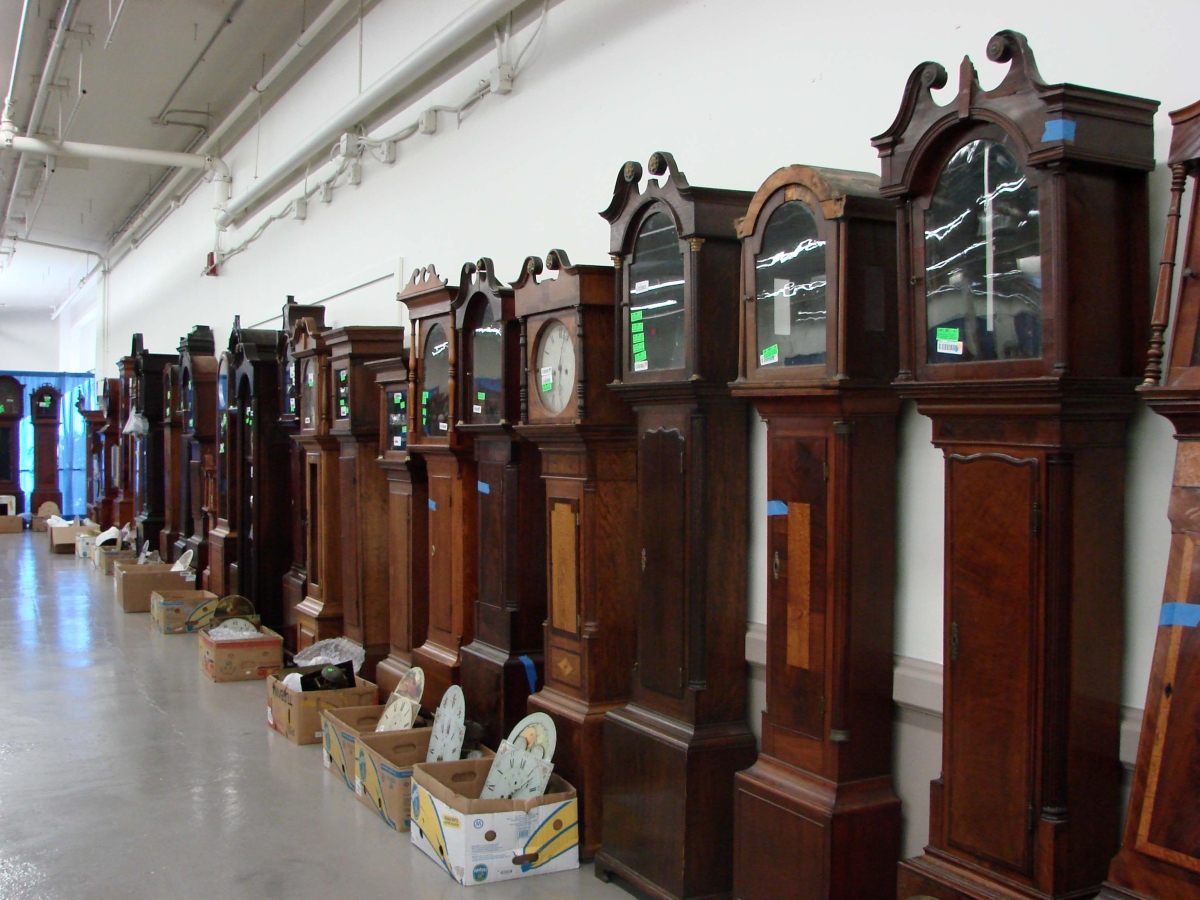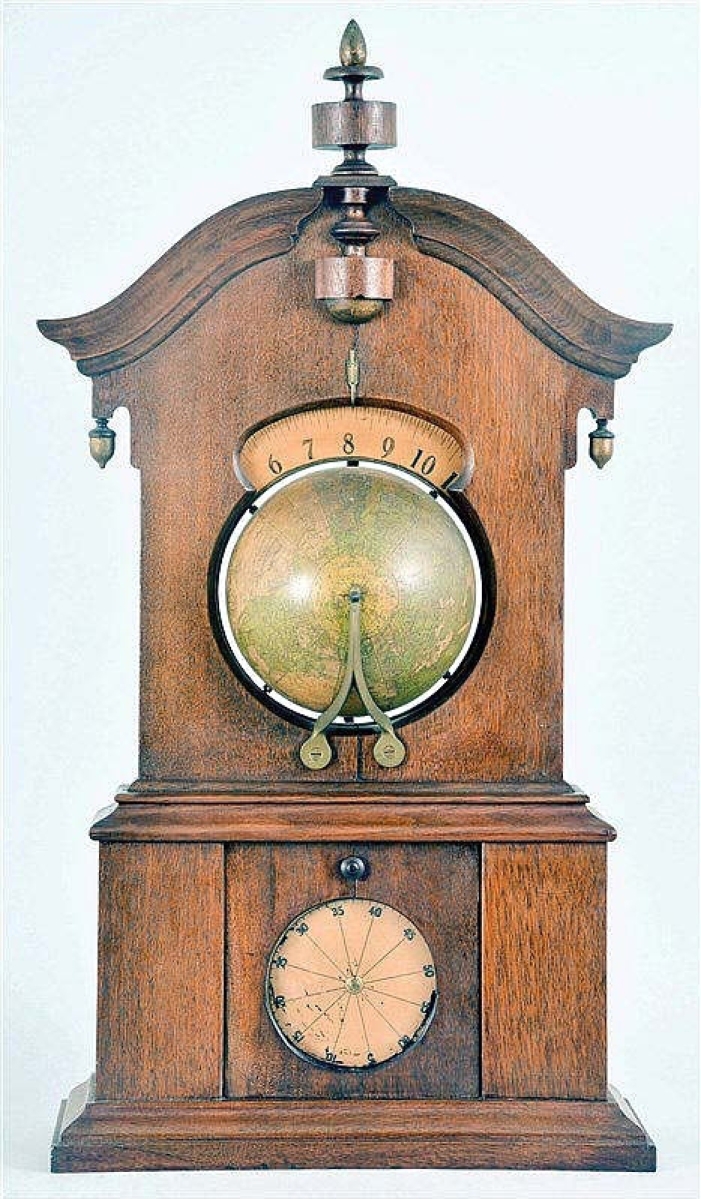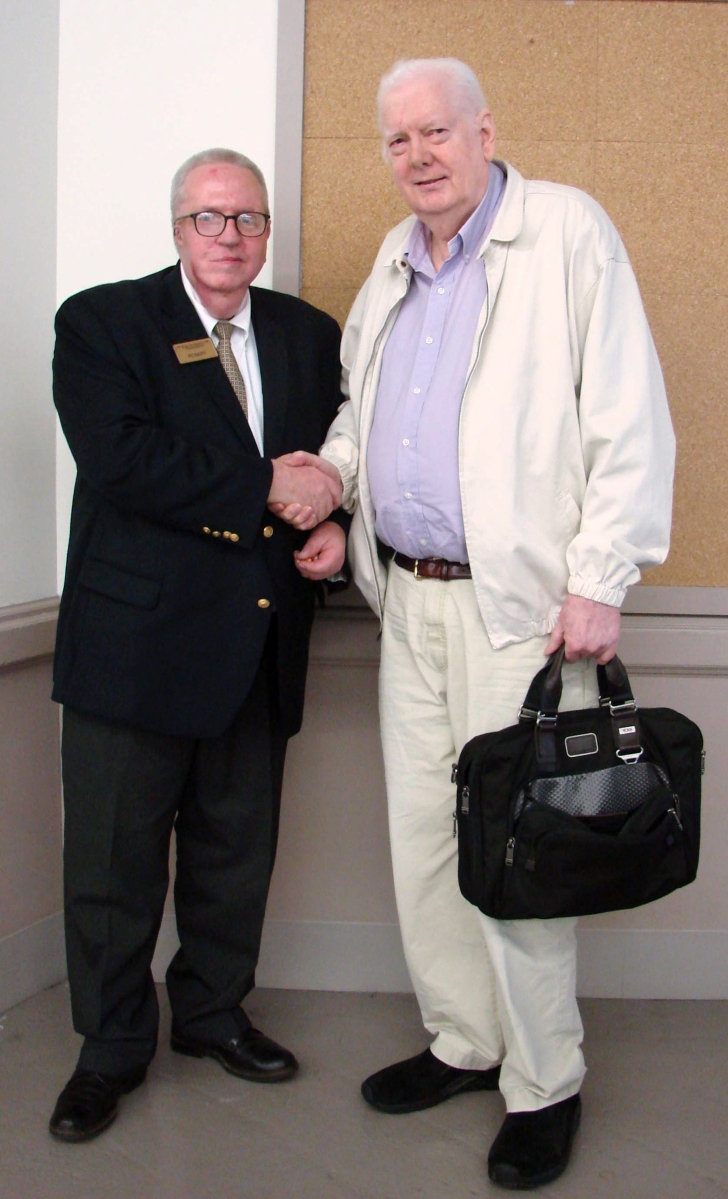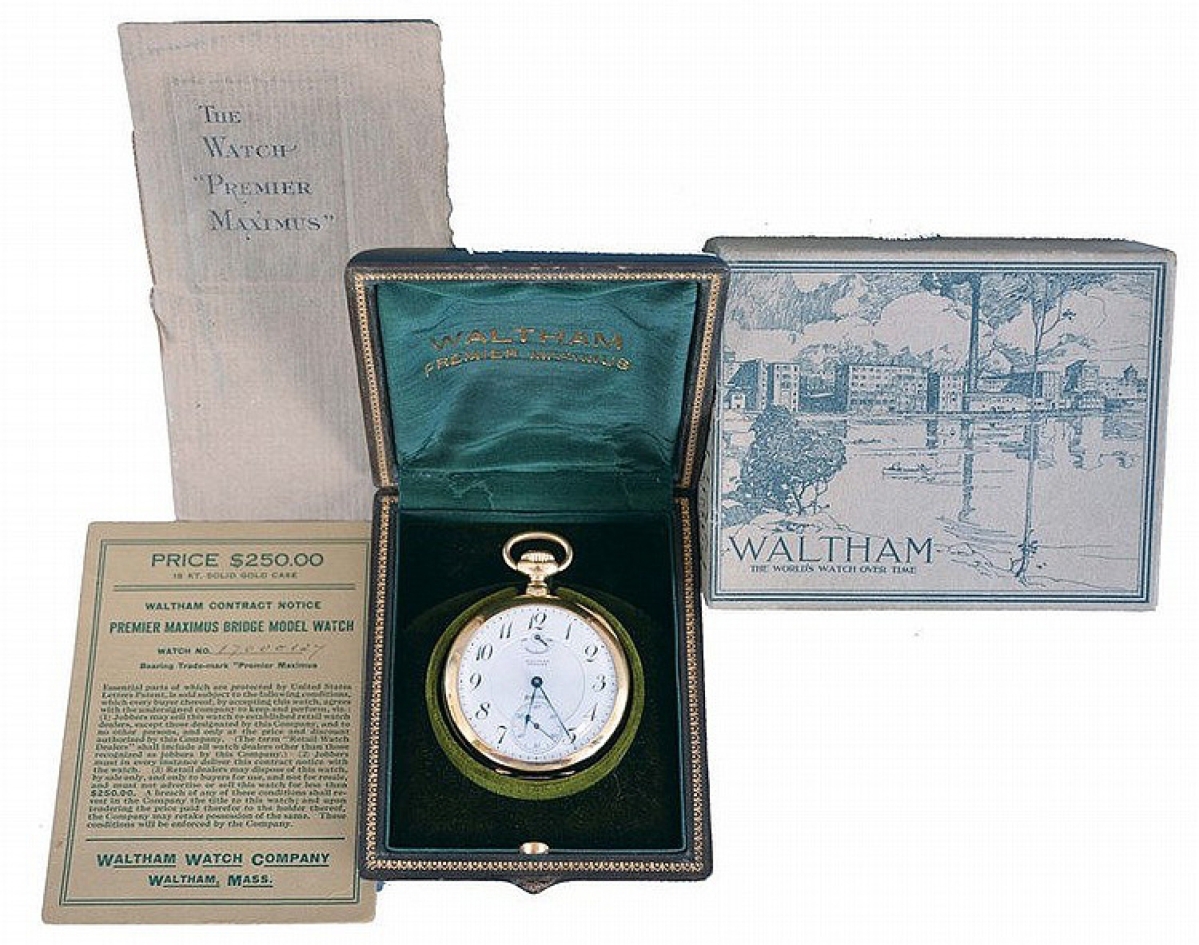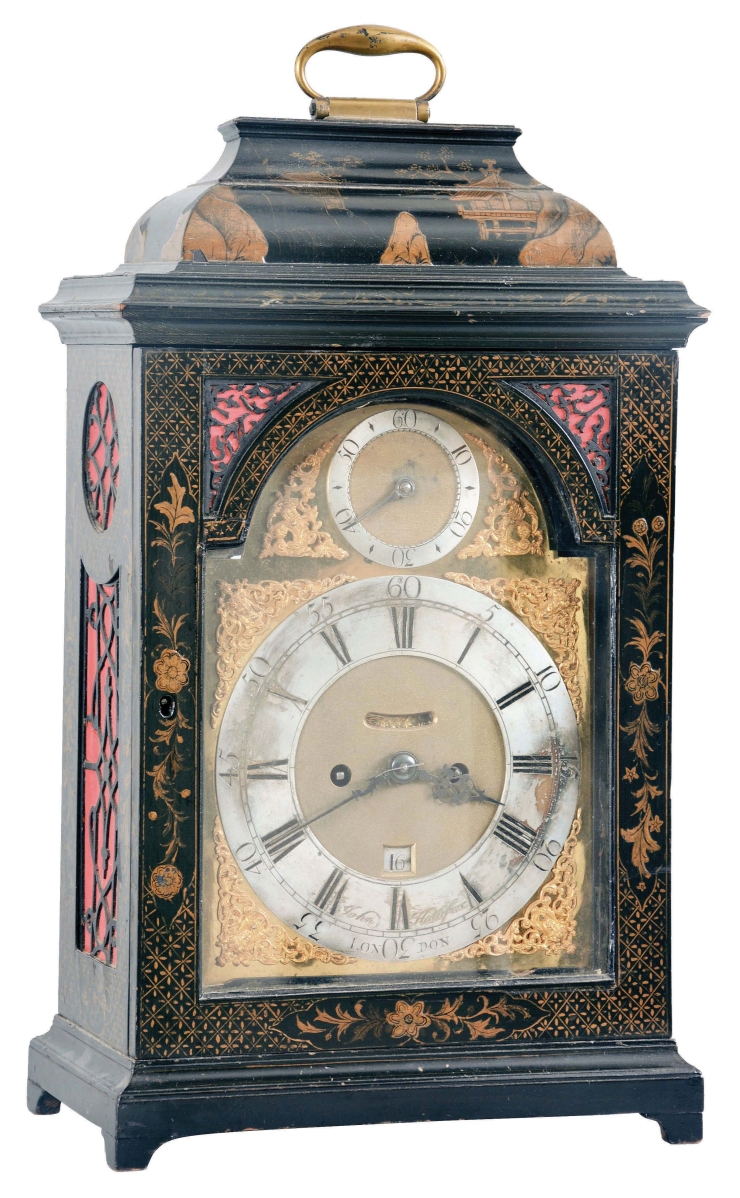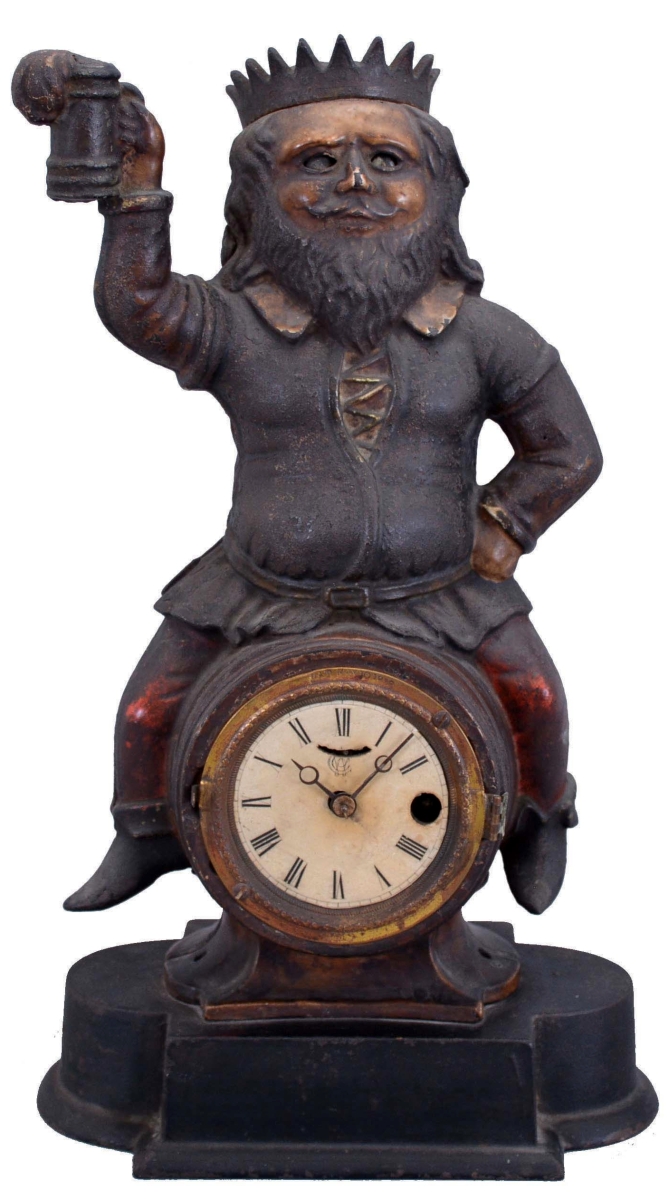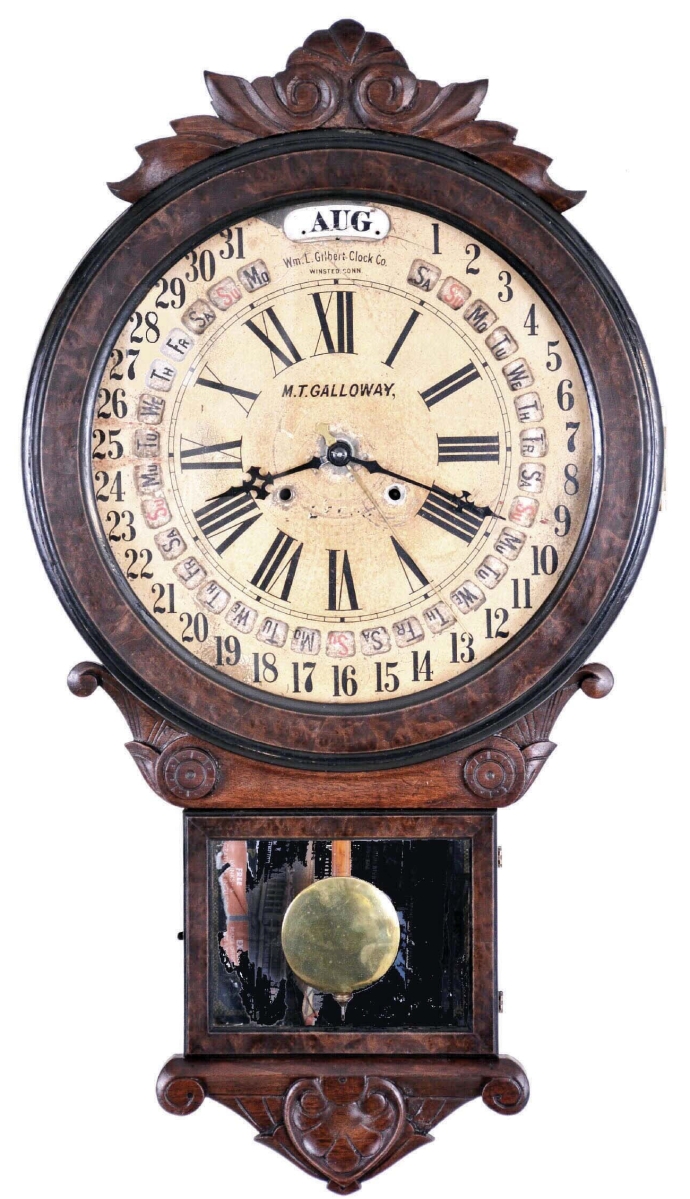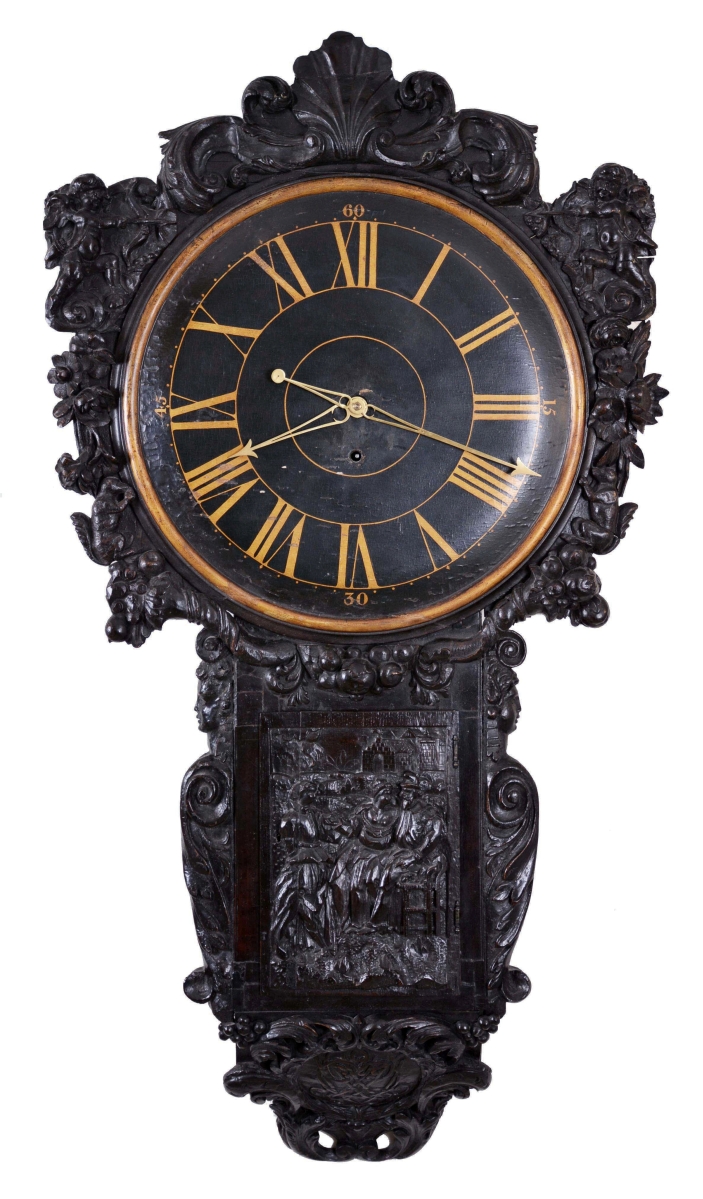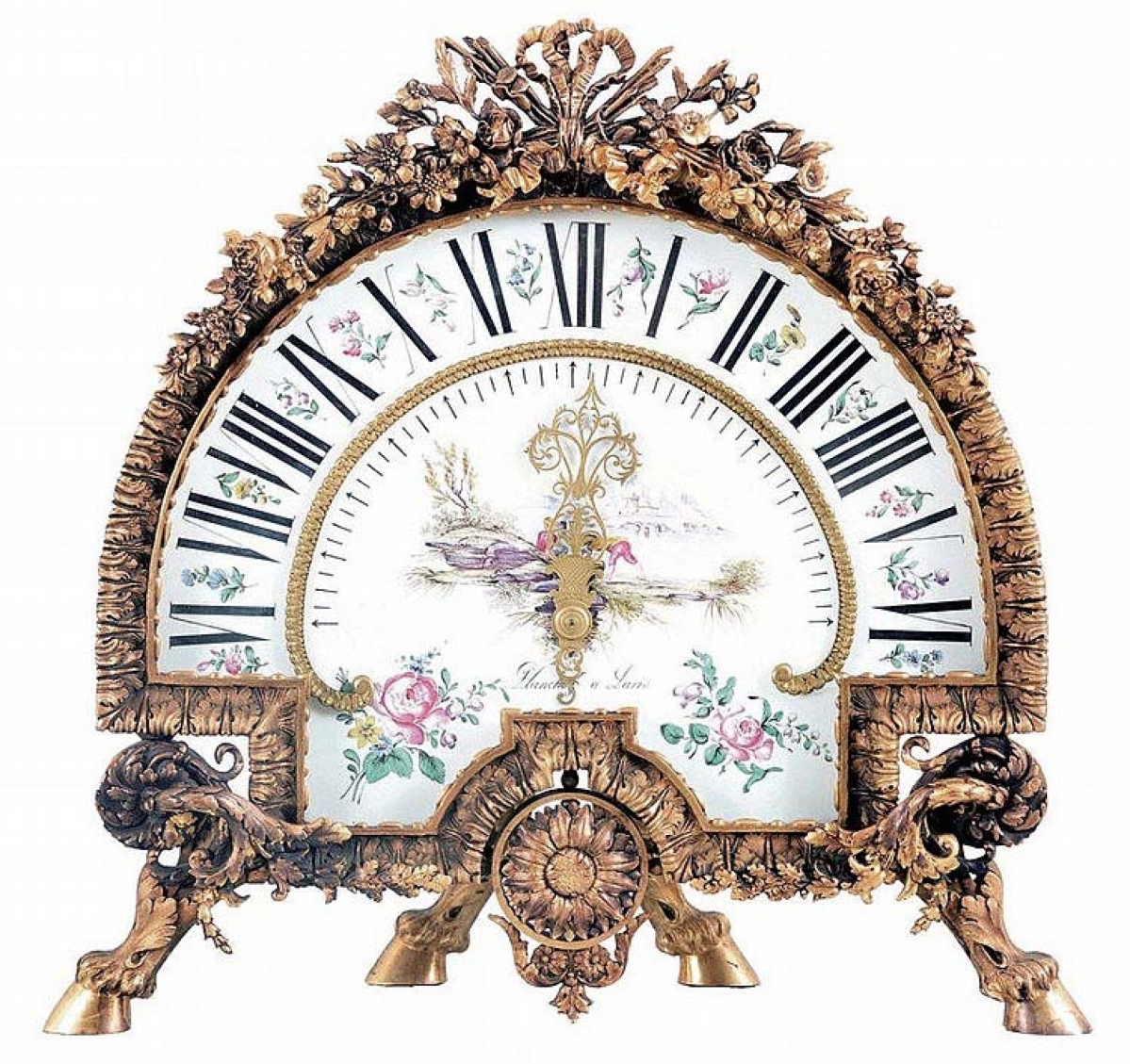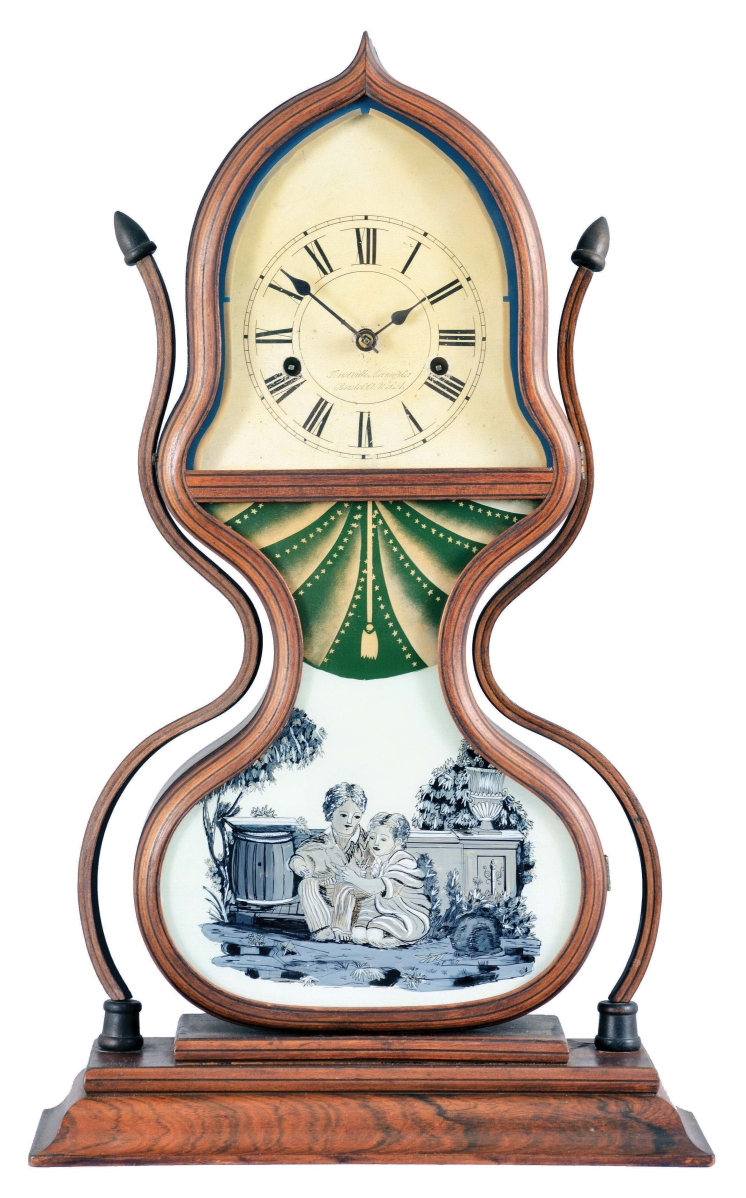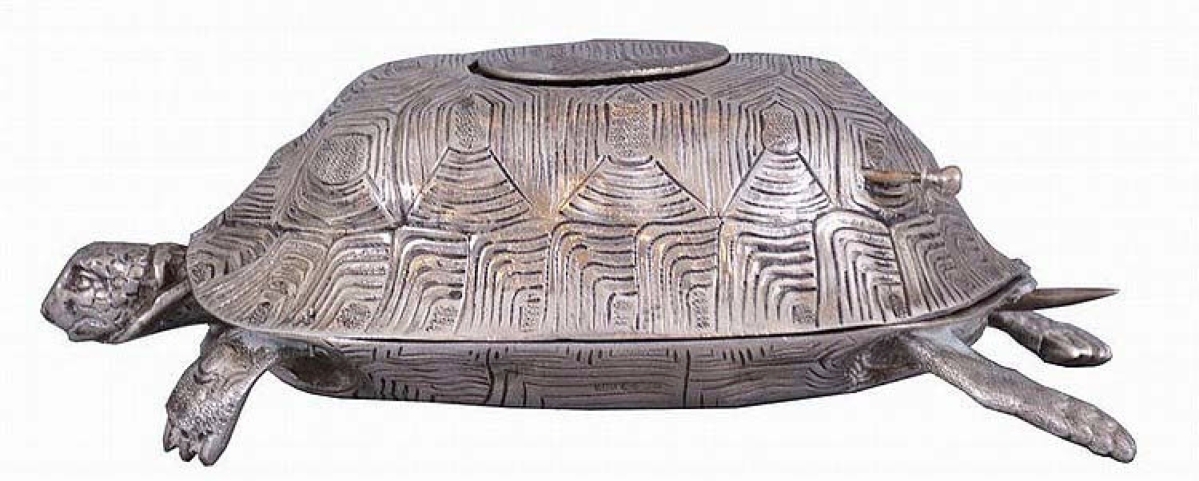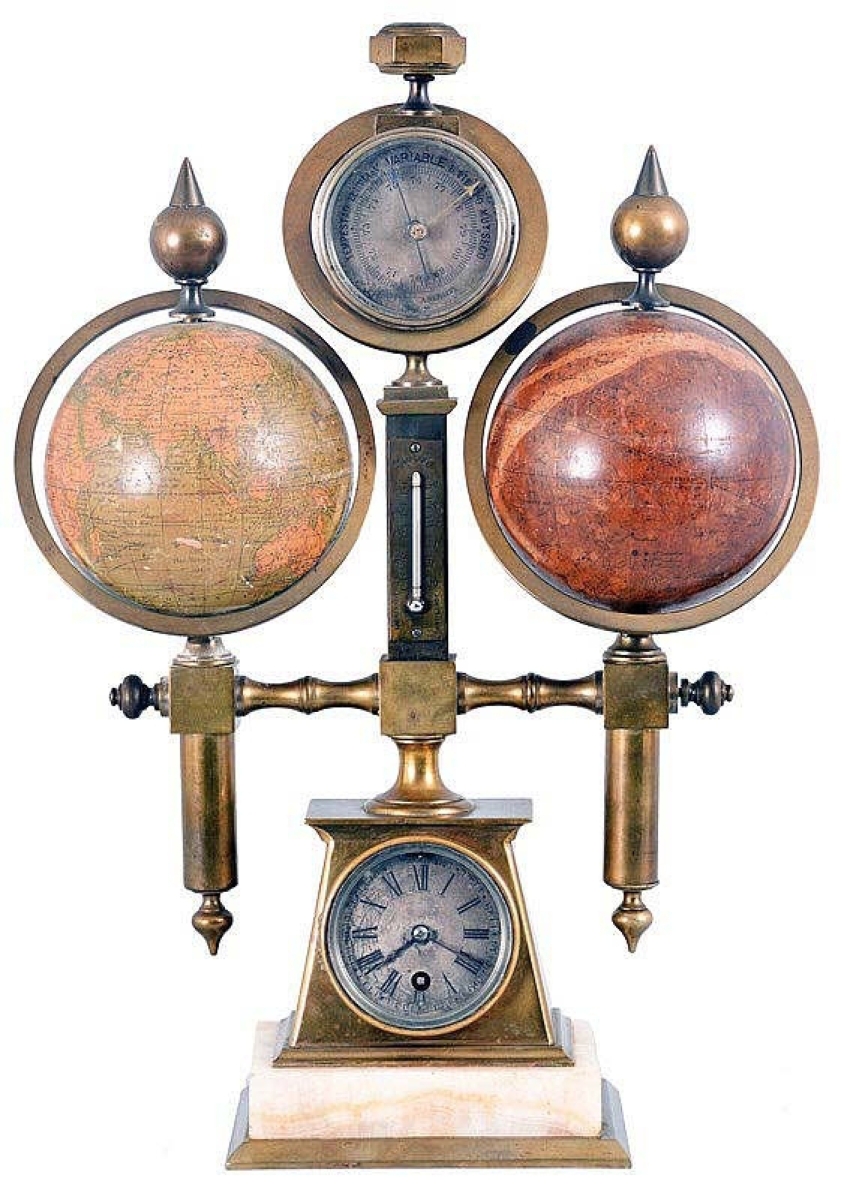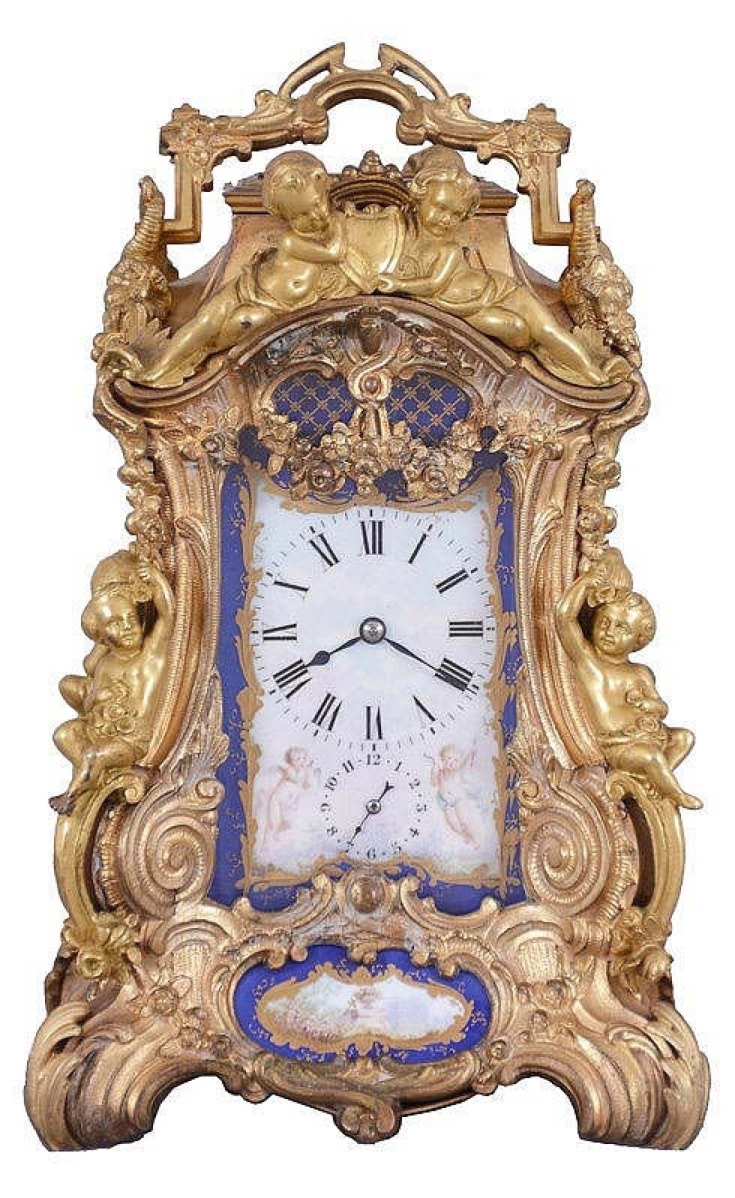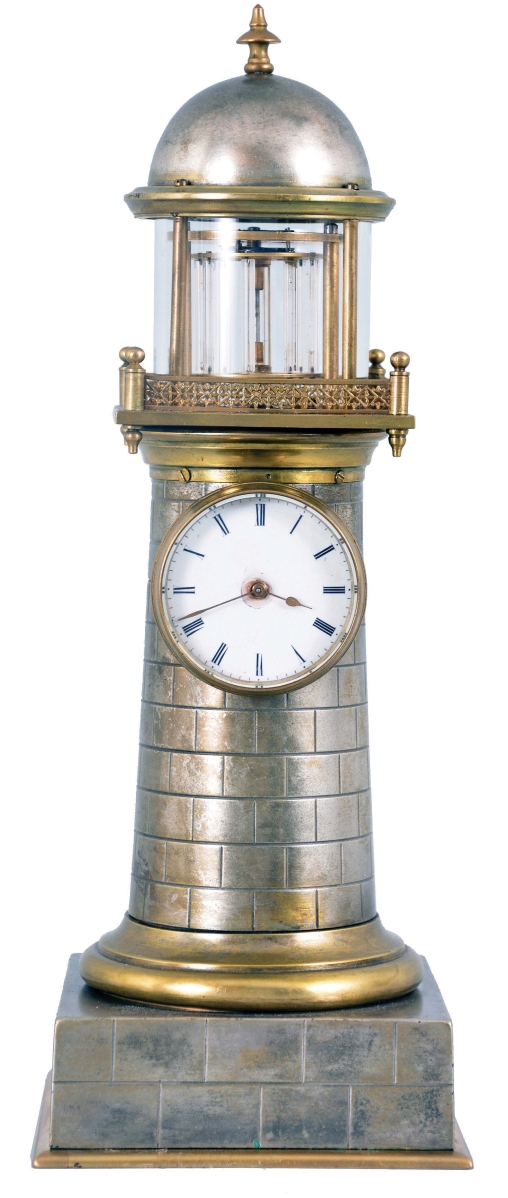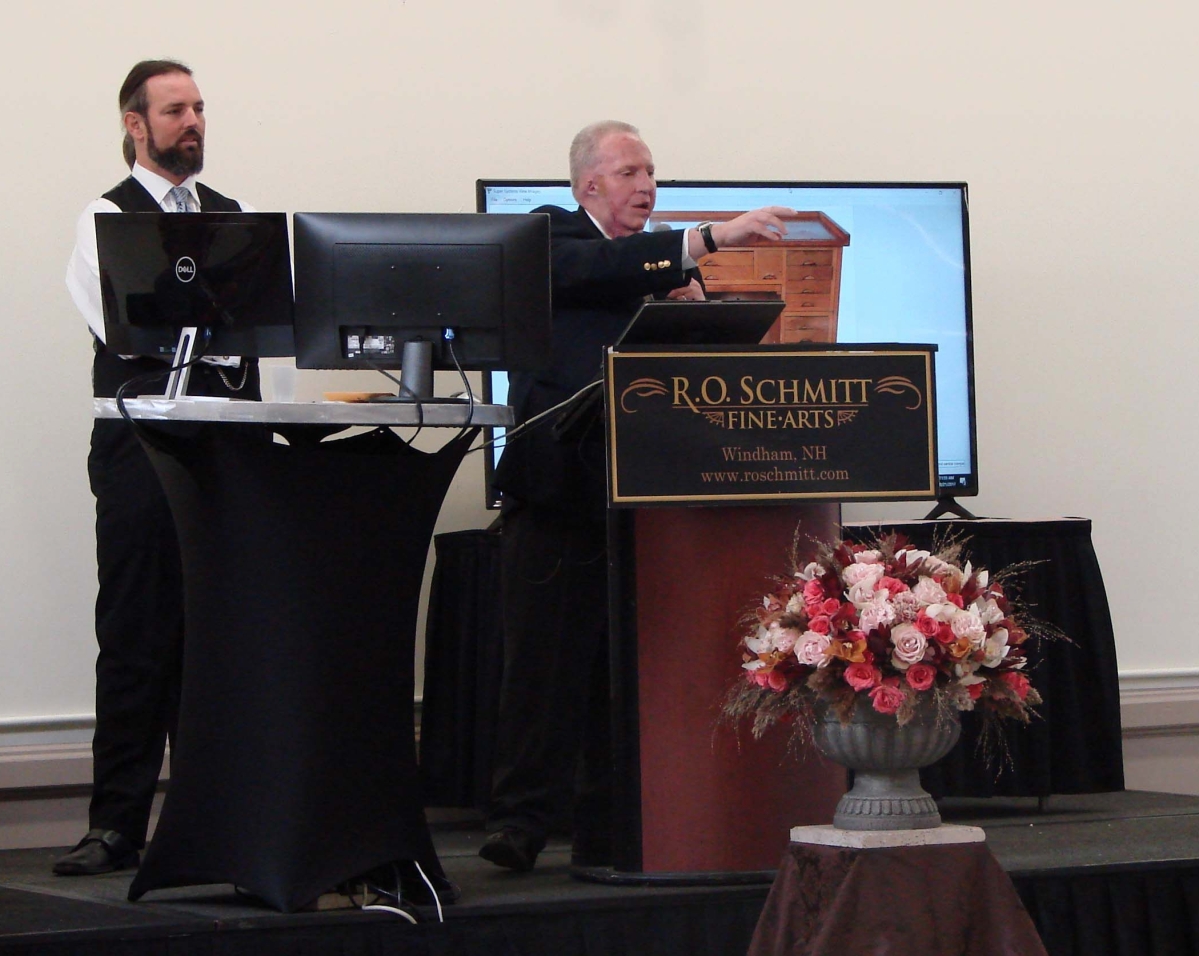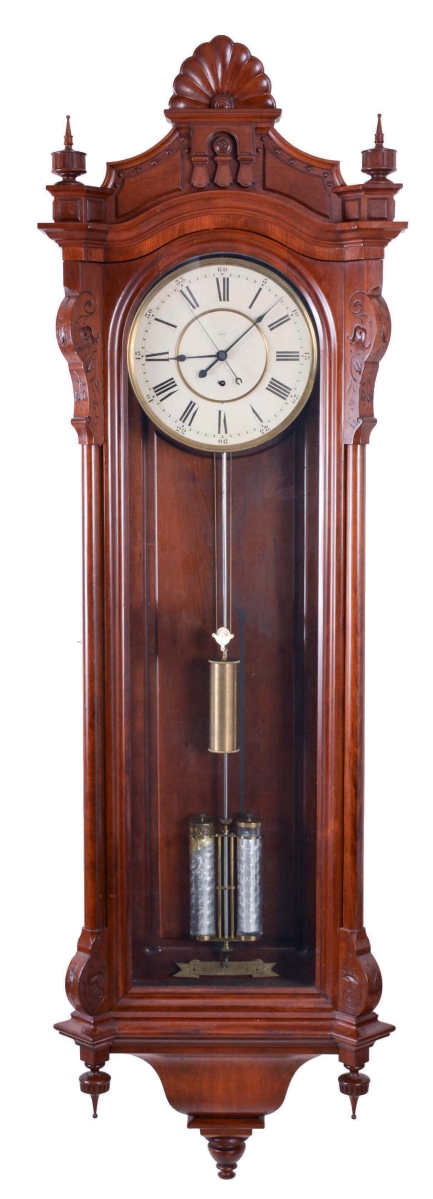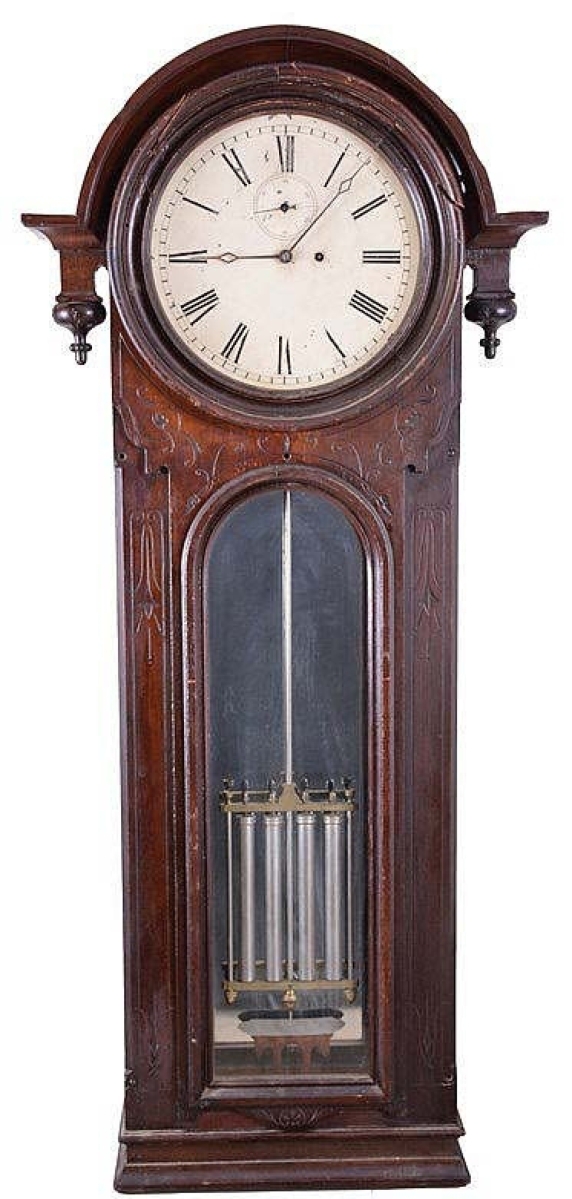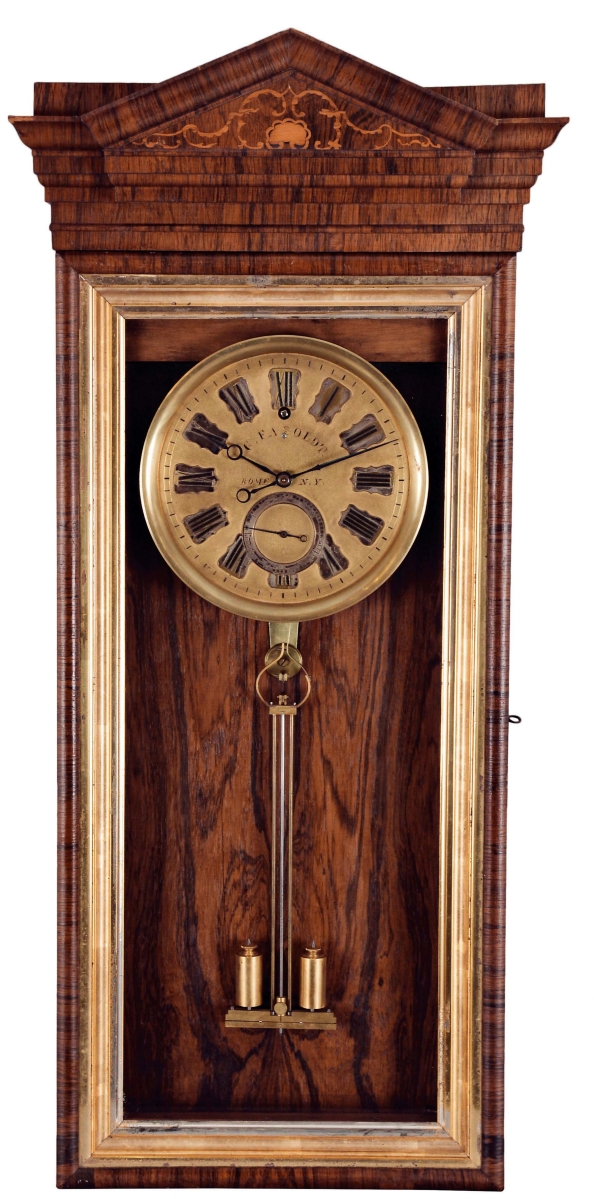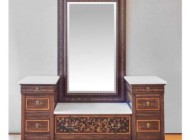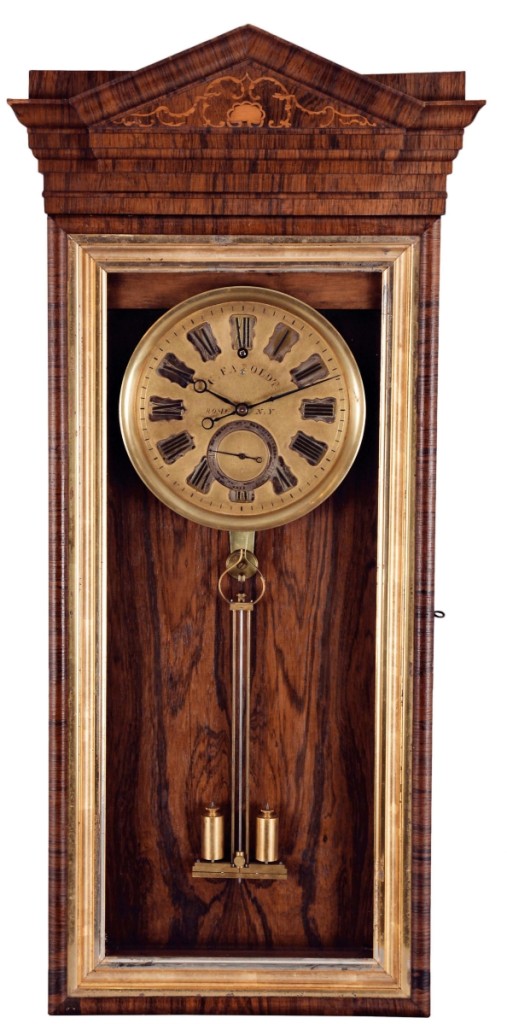
The auction’s top selling clock, at $141,600, was this 30-day hanging regulator made by Charles Fasoldt, while he was working in Rome, N.Y., about 1859. It was one of only two known clocks from Fasoldt’s early years in Rome. Made to the specifications of his 1859 patent escapement and unaltered, it is regarded as the best example known.
Review and Onsite Photos by Rick Russack, Additional Photos Courtesy R.S. Schmitt
MANCHESTER, N.H. – An October 21-22 sale was the second under Dan Horan’s ownership of the R.O. Schmitt company. It grossed $1,419,540, almost $700,000 more than his first sale last April. More than 1,250 lots were sold. Although most were clocks and watches, coins, music boxes and even some baseball cards were included. There were several large lots of clock parts, groups of cases without movements, tools and reference books. Horan makes extensive use of social media, and his wife, Celeste, said that she attributed the influx of new bidders to their use of social media. “Things like the coins brought people to our site that I don’t think had been there before,” she said.
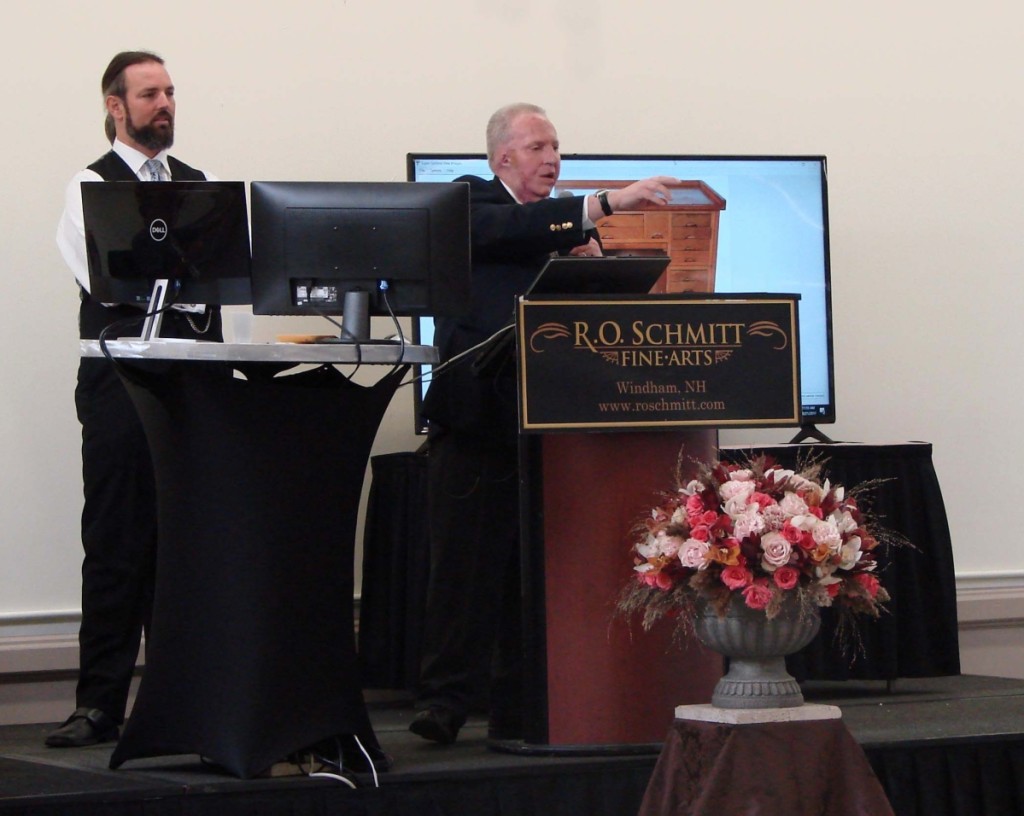
On the left is Dan Horan and at the podium is Robert Cheney, well-known and respected authority on clocks, who is now part of the firm.
There was a wide variety of clocks and watches and the earliest clock in the sale dated back to 1650. Numerous steeple cocks, regulators, blinking eye clocks, carriage clocks, elaborate European mantel clocks, clocks built into mirrors were offered, along with several tall case, banjo, figural swinging and novelty examples. Pocket and wristwatches included Rolex, Fasoldt, Patek Philippe & Co., Howard, Ingraham, Waltham and many more. There was even a group of clocks by a convicted murderer, who himself was later murdered, and a group of early marine chronometers.
While prices were strong in general, it was not necessary to spend thousands of dollars to bring home interesting clocks. There were about 75 bidders in the room, competing with absentee bids, phone lines and multiple internet platforms.
The top lot of the weekend, selling for $141,600, was a 30-day hanging regulator made by Charles Fasoldt while he was working in Rome, N.Y., about 1859. It was one of only two known clocks from Fasoldt’s early years in Rome. Made to the specifications of his 1859 patent escapement and unaltered, it is regarded as the best example known. This clock was bought by Jon Hanson, a collector from Wellesley Hills, Mass., who has been collecting early American watches for more than 60 years, and who has what is probably the most comprehensive collection of Fasoldt watches in the United States.
Hanson said, “Having a large collection of Fasoldt watches and only a few clocks, this clock fit into the area of my interest. It’s a fine example of his earliest work and the condition makes it the best one out there.”
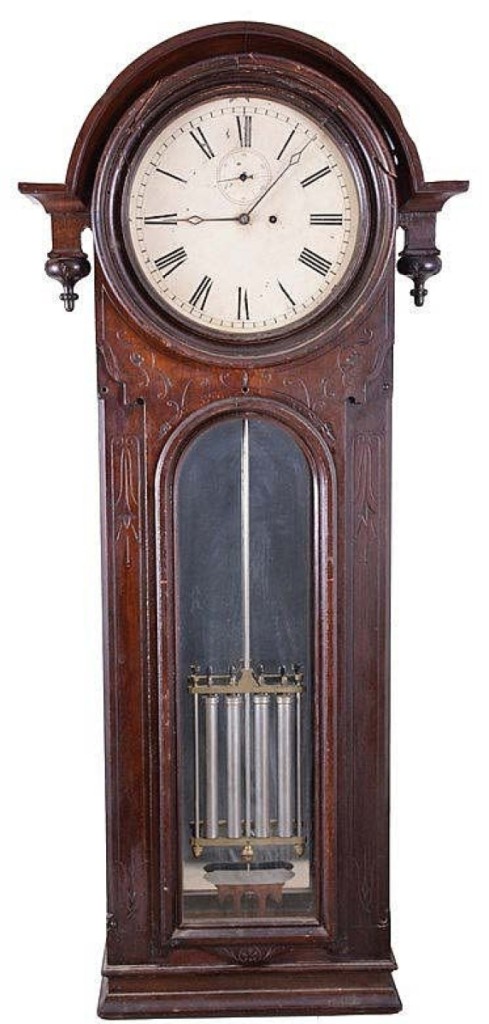
Bringing one of the higher prices of the sale was an E. Howard & Co. “No. 36 Regulator.” The eight-day, time only, jewelers wall clock in need of some restoration realized $18,400.
The earliest clock in the sale, a circa 1650 Italian dial, or shield, clock, had a front-hung cow’s-tail pendulum, a one-day movement and a rope drive. As one might expect, the 400-year-old clock had condition issues, but still exceeded its estimate, finishing at $978. Bob Frishman, Bell-Time Clocks, was asked if collectors expect clocks like this one to run. The answer was no; “Even if you get it running again, running it would just increase wear and I don’t think anyone would do that.”
A heavily carved English tavern clock, circa 1788, would have fit in any home with early carved oak furniture. It was made by J. Thwaites, London, of oak and mahogany and was carved with genre scenes, animals, floral designs, cupids and more. The dial had gilt Roman numerals and pierced brass hands. Thwaites, a well-known, early clockmaker, is said to have begun making clocks in 1610, and, according to Wikipedia, is still in business. The offered clock sold for $5,750.
There were several Eighteenth and Nineteenth Century Pennsylvania tall case clocks, along with English examples. Topping the Pennsylvania group was an eight-day time, strike and calendar tall case clock with four hands, moon phase dial, in a mahogany case with a broken arch pediment and three turned finials. It was made by Jacob Guthart, Lebanon, Penn., circa 1810. English tall case examples were led by a circa 1911 monumental eight-day clock with a three-train movement, made by Joseph Jennens, London. It was 106 inches tall, in a heavily carved, oak, Gothic-style case with both Westminster and Whitington chimes on nine tubes. It realized $7,188. An unusual Seth Thomas No. 4 street example, circa 1925, with a cast iron framed movement, 4-foot pendulum and 28-pound pendulum bob, sold for $7,763, nearly four times the estimate.
There were seven clocks made by Elmer Stennes, active in Weymouth, Mass., in the middle of the last century. His claim to fame, at least to the interest of collectors, is that he murdered his wife and served two years in prison during which time he continued to make clocks, some of which are marked to indicate that he was in jail. He remarried after getting out of prison and was murdered while in bed with his new wife, who was also shot several
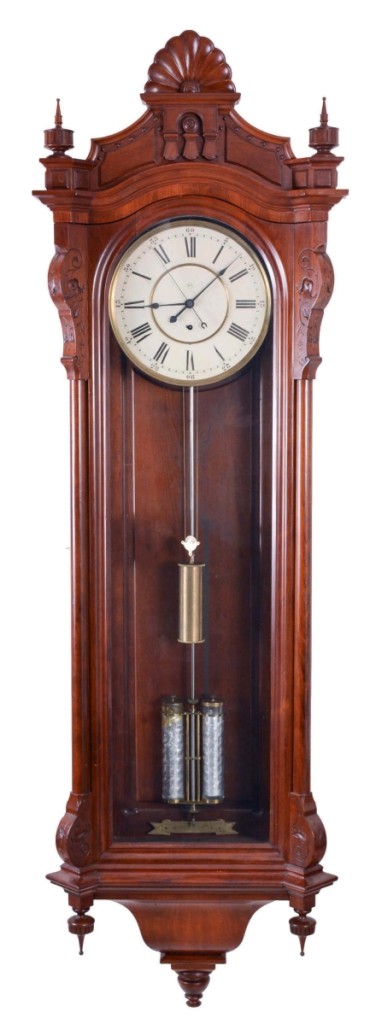
Schmitt’s catalog stated this was the first time in 38 years that the company had offered a Seth Thomas No. 19 jewelers hanging regulator in an uncommon cherry case. The description also noted that the mercury in the pendulum would require special handling. The circa 1886 clock finished at $17,250.
times. She stated that the murderer this time was Stennes’s son, but five friends gave him an alibi and the crime was never solved. The term “clocks made by” is not quite accurate. Stennes made the cases but not the movements, which he purchased from others. A girandole wall example, with a weight-driven, eight-day movement by Kilbourn and Proctor, and reverse painted panels, brought the highest price of the seven, $3,220.
The sale had several pocket watches, including a Waltham Watch Co. Premier Maximus with original boxes and papers, which was the top seller in the category, earning $10,638. A keyless open-face fusee pocket chronometer by London maker A.P. Walsh finished at $6,325, and a Patent Chronometer by Charles Fasoldt, made in Albany circa 1870, went for $4,830, in spite of not being in its original case.
Horan discussed the sale and the firm’s use of social media and internet bidding platforms. “We saw strong interest in several categories. Most of the Rolex watches doubled their estimates, and many of the pocket watches also exceeded estimates. Ansonia figurals had been depressed, but that segment seems to be coming back. I’m very pleased to see the interest in coins – they’re a good part of the mix for us and one of our biggest clock customers bought some coins. We’ll do more in that area.”
Horan also discussed the effectiveness of social media and the development of a proprietary bidding platform, ROSchmitt Live. “We have professional quality videos on our own Facebook and YouTube pages,” he said. “For some of the mechanical clocks, we show them operating and doing their thing – even some naughty things. For others, we provide full descriptions of interesting pieces. It works. Two of the videos on Facebook were each viewed more than 15,000 times, and one was viewed 5,000 times. Facebook’s metrics tell us how long people have spent viewing each and precisely where they’re from. Many views this time came from China, some from places I’d never heard of. Those people are bidding, and many seem to like high-quality European clocks and watches. We’re also experimenting with live streaming of the actual auction.”
Horan is investing heavily in developing a proprietary bidding platform, which may later be marketed to other auctioneers. “We want more communication with our buyers and we want to be able to be certain that online bidders are serious and financially sound,” said Horan. “We’re experimenting with ways to do that and we did some testing at this recent sale. I think this software will revolutionize online bidding.
Prices reported include the buyer’s premium. For information, www.roschmitt.com or 603-432-2237.

